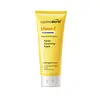What's inside
What's inside
 Key Ingredients
Key Ingredients

 Benefits
Benefits

 Concerns
Concerns

 Ingredients Side-by-side
Ingredients Side-by-side

Water
Skin ConditioningSodium Cocoamphoacetate
CleansingCocamidopropyl Betaine
CleansingSodium C14-16 Olefin Sulfonate
CleansingAcrylates/Beheneth-25 Methacrylate Copolymer
Propylene Glycol
HumectantLauramine Oxide
CleansingGlycerin
HumectantEthoxydiglycol
HumectantSalicylic Acid
MaskingTocopheryl Acetate
AntioxidantCeramide NP
Skin ConditioningPEG-7 Glyceryl Cocoate
EmulsifyingLactic Acid
BufferingSodium Carbonate
BufferingSodium Chloride
MaskingPolysorbate 20
EmulsifyingParfum
MaskingImidazolidinyl Urea
PreservativeWater, Sodium Cocoamphoacetate, Cocamidopropyl Betaine, Sodium C14-16 Olefin Sulfonate, Acrylates/Beheneth-25 Methacrylate Copolymer, Propylene Glycol, Lauramine Oxide, Glycerin, Ethoxydiglycol, Salicylic Acid, Tocopheryl Acetate, Ceramide NP, PEG-7 Glyceryl Cocoate, Lactic Acid, Sodium Carbonate, Sodium Chloride, Polysorbate 20, Parfum, Imidazolidinyl Urea
Water
Skin ConditioningMyristic Acid
CleansingSodium Chloride
MaskingEthyl Hexanediol
SolventCocamidopropyl Betaine
CleansingCitrus Limon Fruit Oil
AstringentSodium Methyl Cocoyl Taurate
CleansingEthylhexylglycerin
Skin ConditioningStearic Acid
CleansingPEG-60 Hydrogenated Castor Oil
EmulsifyingPolysorbate 80
EmulsifyingCaprylyl Glycol
EmollientGlycerin
HumectantPotassium Hydroxide
BufferingSalicylic Acid
MaskingLauric Acid
CleansingButylene Glycol
HumectantSalix Alba Bark Water
Astringent1,2-Hexanediol
Skin ConditioningDisodium EDTA
Glycol Distearate
EmollientMelaleuca Alternifolia Leaf Oil
AntioxidantCitric Acid
BufferingWater, Myristic Acid, Sodium Chloride, Ethyl Hexanediol, Cocamidopropyl Betaine, Citrus Limon Fruit Oil, Sodium Methyl Cocoyl Taurate, Ethylhexylglycerin, Stearic Acid, PEG-60 Hydrogenated Castor Oil, Polysorbate 80, Caprylyl Glycol, Glycerin, Potassium Hydroxide, Salicylic Acid, Lauric Acid, Butylene Glycol, Salix Alba Bark Water, 1,2-Hexanediol, Disodium EDTA, Glycol Distearate, Melaleuca Alternifolia Leaf Oil, Citric Acid
 Reviews
Reviews

Ingredients Explained
These ingredients are found in both products.
Ingredients higher up in an ingredient list are typically present in a larger amount.
Cocamidopropyl Betaine is a fatty acid created by mixing similar compounds in coconut oil and dimethylaminopropylamine, a compound with two amino groups.
This ingredient is a surfactant and cleanser. It helps gather the dirt, pollutants, and other impurities in your skin to be washed away. It also helps thicken a product and make the texture more creamy.
Being created from coconut oil means Cocamidopropyl Betaine is hydrating for the skin.
While Cocamidopropyl Betaine was believed to be an allergen, a study from 2012 disproved this. It found two compounds in unpure Cocamidopropyl Betaine to be the irritants: aminoamide and 3-dimethylaminopropylamine. High-grade and pure Cocamidopropyl Betaine did not induce allergic reactions during this study.
Learn more about Cocamidopropyl BetaineGlycerin is already naturally found in your skin. It helps moisturize and protect your skin.
A study from 2016 found glycerin to be more effective as a humectant than AHAs and hyaluronic acid.
As a humectant, it helps the skin stay hydrated by pulling moisture to your skin. The low molecular weight of glycerin allows it to pull moisture into the deeper layers of your skin.
Hydrated skin improves your skin barrier; Your skin barrier helps protect against irritants and bacteria.
Glycerin has also been found to have antimicrobial and antiviral properties. Due to these properties, glycerin is often used in wound and burn treatments.
In cosmetics, glycerin is usually derived from plants such as soybean or palm. However, it can also be sourced from animals, such as tallow or animal fat.
This ingredient is organic, colorless, odorless, and non-toxic.
Glycerin is the name for this ingredient in American English. British English uses Glycerol/Glycerine.
Learn more about GlycerinSalicylic Acid (also known as beta hydroxy acid or BHA) is a well-known ingredient for treating skin that struggles with acne and clogged pores. It exfoliates both the skin's surface and deep within the pores to help clear out buildup, control oil, and reduce inflammation.
Unlike AHAs (alpha hydroxy acids), salicylic acid is oil-soluble. This allows it to penetrate into pores which makes it especially effective for treating blackheads and preventing future breakouts.
Salicylic acid is also known for its soothing properties. It has a similar structure to aspirin and can calm inflamed or irritated skin, making it a good option for acne-prone skin that is also sensitive.
Concentrations of 0.5-2% are recognized by the U.S. FDA as an over-the-counter topical acne product.
It can cause irritation and/or dryness if one's skin already has a compromised moisture barrier, so it's best to focus on repairing that before introducing this ingredient into your routine.
While salicylic acid does not increase sun sensitivity, it’s still important to wear sunscreen daily to protect your skin.
If you are looking for the ingredient called BHA or Butylated Hydroxyanisole, click here.
Learn more about Salicylic AcidChances are, you eat sodium chloride every day. Sodium Chloride is also known as table salt.
This ingredient has many purposes in skincare: thickener, emulsifier, and exfoliator.
You'll most likely find this ingredient in cleansers where it is used to create a gel-like texture. As an emulsifier, it also prevents ingredients from separating.
There is much debate on whether this ingredient is comedogenic. The short answer - comedogenic ratings don't tell the whole story. Learn more about comegodenic ratings here.
The concensus about this ingredient causing acne seems to be divided. Research is needed to understand if this ingredient does cause acne.
Scrubs may use salt as the primary exfoliating ingredient.
Learn more about Sodium ChlorideWater. It's the most common cosmetic ingredient of all. You'll usually see it at the top of ingredient lists, meaning that it makes up the largest part of the product.
So why is it so popular? Water most often acts as a solvent - this means that it helps dissolve other ingredients into the formulation.
You'll also recognize water as that liquid we all need to stay alive. If you see this, drink a glass of water. Stay hydrated!
Learn more about Water